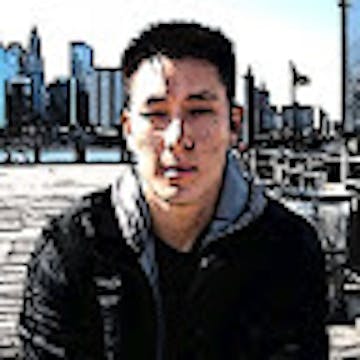Skip to content

 Uncovering the stories that make the 4-Hour Workweek possible: A 10-year review
Uncovering the stories that make the 4-Hour Workweek possible: A 10-year review
Interviews with the entrepreneurs, digital nomads, and the "New Rich" who contributed to The 4-Hour Workweek by Tim Ferriss.
A few months ago, I was organizing my apartment as it became clear I’d be working from home for the foreseeable future. I dusted off some books and came across a book I haven’t read in ten years: The 4-Hour Workweek by Tim Ferriss. Here are my thoughts (with the help of others) about the book ten years later. I interviewed the people who contributed to the book in the early 2000s and this article explores their stories in more detail and what they think about the book today.
So be bold and don’t worry about what people think. They don’t do it that often anyway. — The 4-Hour Workweek
Re-applying The 4-Hour Workweek best practices
For the uninitiated, The 4-Hour Workweek is broken out into four “steps” as follows:
Naturally, I’m leaving out a lot of details but I think you get the gist. Most people who read the book have a career-changing or life-changing story, here’s a summary of mine:
Ten years ago, I had a cushy job at a big company and started to have thoughts along the lines of: Is this it? The timing couldn’t have been more perfect. At the behest of a close friend, I picked up The 4-Hour Workweek, and my perception about what’s possible in terms of work and travel completely changed. I used up all my vacation days and took a 4-week backpacking trip through southeast Asia, quit my job upon returning to the states, and set off to find my “muse” (in the book, a “muse” is an income-generating business that requires little maintenance).
It’s the summer of 2020 and the pandemic is in full swing. I decided to read the book again and see how I might apply the lessons from the book to my life...again.
The principles vs. the people
Reading the book in 2020 kind of felt like being Austin Powers for a few days. I wouldn’t say the principles in the book are outdated, but the context is quite different.


In the early 2000s, jobs that allowed you to work from home were not too common. One could argue that “working remotely” was not really socially acceptable. Today, you're probably reading this post in the middle of the day on a Wednesday in your pajamas in between Zoom meetings at your kitchen table. Also, Tim details the different steps for creating a “muse” geared towards physical products and distribution channels, but today, the rise of software and the indie hacker movement means your “muse” can be 100% digital without the need for physical inventory.
Is the 4-hour workweek attainable now that everyone is working remotely? Perhaps more of us have achieved Liberation due to the pandemic and more tools have popped up allowing us to achieve Automation as well. The principles are still sound today. Tim even said he wouldn’t change many of the principles in the book when he was asked about updating the book on his (episode #295).
As I was reading the book again and re-learning the stories of these digital nomads and life-hackers, I started to wonder what they would say about the book in 2020. The book is ultimately a collection of stories about the New Rich, as Tim calls them, a class of people who forged their own paths and shared their stories with Tim in the early 2000s. What are the New Rich doing now? Do they still practice the principles they provided to Tim as he was writing the book?
You get bite-sized pieces of these people’s stories in the book that leave you wanting to know more. My curiosity led me to research some of these people to see what other lessons I could learn from their experiences. As the quote at the top of this post states, I decided to be bold and reach out to some of these folks to get their stories firsthand.
I. The art of getting lost
Discussing topics related to travel, being a digital nomad, and taking the leap to go on an extended “mini-retirement.”
Traveling may not be top-of-mind for many people these days (it’s November 2020), but reading the Liberation part of the book brought me back to a backpacking trip I took 10 years ago to Southeast Asia. Chapters from the book such as “escaping the office” and “mini-retirements” were a result of Tim’s separating himself from the day-to-day grind of managing his supplements business and traveling around the world for an extended period.
The simple willingness to improvise is more vital, in the long run, than research. — Rolf Potts, Vagabonding
The above quote is the epigram for chapter 14 of the book: Mini Retirements - Embracing the mobile style. Tim attributes ’s as one of the main books that pushed him over the edge to take an extended trip. Rolf elaborates a bit more about the quote above and how it relates to creating a “bucket list”:
No matter what research you do in advance, that willingness to deviate from your plans really counts for more than all the plans you made. — Rolf Potts
Spontaneity. Improvisation. Happenstance. All concepts you might be willing to fiddle with while on a gap year or solo-backpacking trip. As Rolf suggests, this way of thinking can be applied to your work life too. Teams are always looking for ways to innovate and giving people the freedom to experiment may lead to these important discoveries. A related concept Laura Delizonna describes in the Harvard Business Review is “.” Knowing you won’t be punished for going off the beaten path should be rewarded and leads to higher performing teams.
The hamster wheel
The “mini-retirement” was a pretty groundbreaking idea in the book since it requires you to shift your thinking on what a “retirement” means. In the Liberation chapter, Tim discusses all the fears and excuses people make to not travel. For instance, many families are worried about traveling with kids.
This didn’t stop and her family from traveling. Robin wrote for an online travel magazine called and answered one of Tim’s forum posts about preparation and overcoming fears of traveling with your family. You can read all about her experience in her book . In addition to Robin’s openness to traveling with her family, she provides some good framing for those weary of getting off their “career path”:
It’s not permanent. That hamster wheel is always there, you can always jump back on that working hamster wheel. — Robin Malinosky-Rummell
The hamster wheel that Robin describes is addicting and predictable at the same time. It’s like getting FOMO not for a fancy meal or a beach paradise but rather Zoom meetings, weekly project updates, strategy planning sessions.
If you are not an entrepreneur and work full-time at a company, there is no better time to get the work/life flexibility you want given the current state of the world. Tim provided a script in the book for how you can negotiate with your manager on working remotely one day a week, then three days a week, etc. As Elaine Pofeldt says in the first video at the top of this post, the norms have completely shifted.
Advocating for integrating work, family, community, and self into what we call “life” pre-dates The 4-Hour Workweek. is an organizational psychologist and Professor of Management at The Wharton School, and he’s been preaching this concept since the early 1990s.
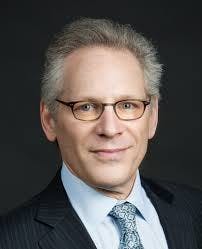

Professor Stew Friedman, founding director of Wharton's Work/Life Integration Project
In a 1998 HBR article called , Professor Friedman explores how managers and employers can support “whole people” who have lives outside of work. When you think of a traditional manager at a big company in the early 1990s, you may conjure up images of not physically leaving the office until your manager does and putting work over everything else. Professor Friedman found that some managers back then were experimenting with unofficially giving employees more flexibility:
I love that third concept. I asked Professor Friedman about his method, and he mentioned a lot of it comes down to experimentation (more about this later in this post).
To be innovative, you need to have creative experimentation. — Steward Friedman
Kenkey and kontomire aren’t so bad
In the Definition chapter, Tim discusses overcoming your fears of traveling. Let’s say you get past your fear of quitting your job and committing to travel. Then there’s the fear of the unknown once you get to your actual destination.
One of the stories featured in the book is from , founder of , a site dedicated to students and professionals who want to study and work abroad (check out their recently published on preparing for a job abroad).


Jean-Marc Hachey
I wanted to learn more about Jean-Marc’s story about landing in Ghana as a volunteer. He didn’t have access to Western “delicacies” like bread and sugar since stores and restaurants were always running out of food. Every meal, Jean-Marc ate Ghanian staples like kenkey (fermented white corn) and kontomire (spinach stew).
Ghanaians are such beautiful people. I realized that’s all I need. Some basic food, friendship, and you can survive. You can do anything. — Jean-Marc Hachey


kenkey from Ghana
Once Jean-Marc overcomes that fear and is able to enjoy the destination, he gives some additional advice on how to get the most of the experience: standing in line.
Standing in line is interesting. Being stuck somewhere is interesting. When you stand still, you see a lot of things you don’t see when you’re driving or quickly walking by. Standing still is a wonderful opportunity to see the humanity that flows by you. — Jean-Marc Hachey
Flâneur
I think this ties back into Rolf’s quote at the top of this section and about improvisation and how it can lead to unexpected discoveries. One of the core tenets of Vagabonding is preparation and the impact it has on the travel experience. We talked a bit about the ways to prepare and how the media can create misperceptions about a destination (Rolf suggest getting really good at Googling things). Preparation, however, needs to be balanced with the notion of getting lost or flâneuring (see more about flâneuring
):
It’s just the concept of wandering through the city or countryside with no particular goal except experience. Realizing that getting lost is not a bad thing. — Rolf Potts
I would be remiss for not talking asking Rolff how traveling has changed due to the pandemic. Rolf discusses how the philosophies from his book can still be applied to traveling during the pandemic:
Paying attention and taking precaution has always been a part of Vagabonding. I suspect that we will be savvy about pandemic travel in a year or five years from now. — Rolf Potts
II. How to 80/20 your work and life
Digging deeper into examples from the book of people applying the 80/20 principle.
1) Doing something unimportant well does not make it important. 2) Requiring a lot of time does not make a task important. — The 4-Hour Workweek
If I had to pinpoint the one principle I took away from the book and found real-world applications for, it would be the 80/20 principle. Tim talks about the 80/20 principle (or the ) in the Elimination chapters. Once you grasp the simplicity of this principle, you begin to see it in all aspects of work and life.
A majority of your company’s revenue probably comes from a small set of customers. When planning for travel, a majority of decisions can be attributed to the dates for your flight bookings. If you maintain a blog, most of your traffic probably comes from a few posts that went “viral.” Pretty neat to see all this come from a 19th century Italian engineer who was exploring issues of income inequality.
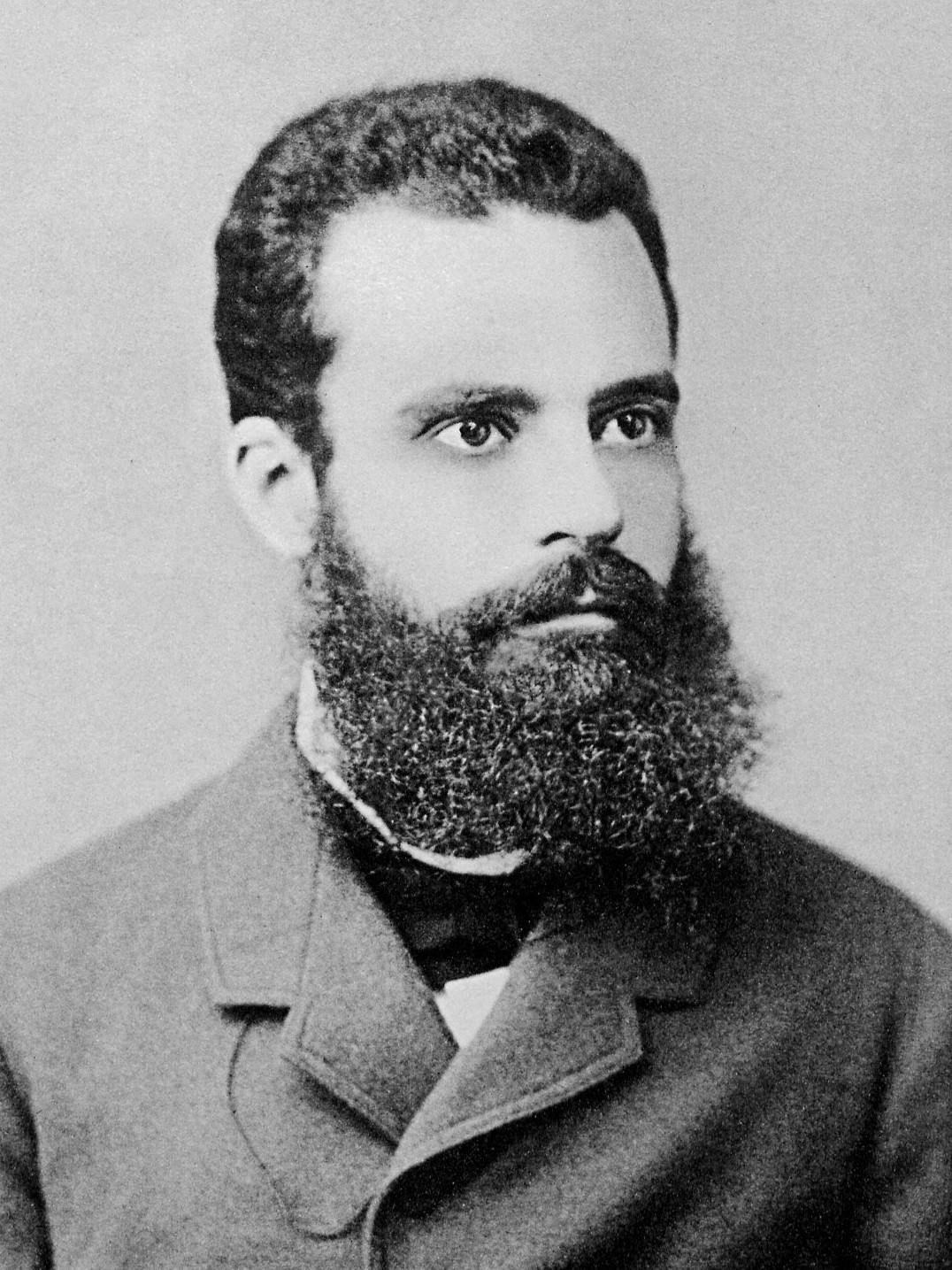

Vilfredo Pareto
If you pay attention, you’ll notice that the 80/20 principle carries through to Tim’s subsequent books The 4-Hour Body and The 4-Hour Chef. In The 4-Hour Body, Tim talks about the as the smallest does to achieve a certain result. This taught me to do just the right amount of exercises in the gym to maintain a certain level of fitness. I really like this quote from Michael Hyatt who reflects on the minimum effective dose:
To make progress on the things that matter most, we can’t afford losing ground by trying to do too much—even if we’re trying to do the right things. — Michael Hyatt
For example, how do you apply the 80/20 principle to learning a language? In The 4-Hour Chef, Tim discusses the DiSSS framework for learning (Deconstruction, Selection, Sequencing, Stakes) and suggests learning the 100 most common words and phrases to be conversational in a language. To continue seeing results, however, consistency is required. This is the “Sequencing” step in the DiSSS framework. This interview with Tim from highlights the importance of habits in making the 80/20 principle work for you:
I asked Tim how he gets so much done in his life. He then surprised me and said he actually procrastinates a lot, but he knows what is important to get done using habits. — Yaro Starak
This 13-minute video from Tim breaks down the accelerated learning steps in more detail:
When I spoke with some people who contributed to the book about the principles they continue to practice today (15 years since meeting Tim), a majority cited the 80/20 principle.
Pet-sitting and American culture
Professor is the former President of (Silicon Valley Association of Startup Entrepreneurs). SVASE is the organization Tim volunteered at in the early 2000s to organize events for the startup entrepreneur community. Professor Roden discussed international pet-sitting as a way to combine travel and her love of animalsーan amazing life hack that demonstrates the 80/20 principle across multiple dimensions, allowing her to:
I get paid for loving and being loved by an animal at my convenience when I want and where I want. I’ve been to 6 to 7 countries taking care of dogs, cats, and birds. — Professor Laura Roden
What an effective way to apply the 80/20 principle to travel, pets, and entrepreneurship in one activity👍.
Applying the 80/20 principle to our work might be endemic to American culture. is a friend of Tim and former derivatives trader. He talks about how having the blueprint beforehand doesn’t ensure 100% success because things will always go wrong during construction:
Our culture is more Pareto principle-based as Americans. We’re willing to just let it fly. If there’s a mistake, you either deal with it, you roll with the punches, you fix it, and then you move on. — Albert Pope
Later in the interview, Albert talked about his passion for the details when working on a project. This focus on the details actually led him out of finance and into the world of engineering. When you’re building things from the bottom up, the 80/20 principle may not always apply because getting the details right, as Albert discusses, is the difference between the project succeeding or failing.
Taking the worry out of worrying
One of my favorite stories from the book is from , Editor-at-Large at Esquire. He wrote a story in Esquire about outsourcing various parts of his life to virtual assistants. This included research for his articles to settling arguments with his wife. You can read the from 2005 in Esquire, which Tim took excerpts from for his book.
One story from the 2005 article which is not mentioned in The 4-Hour Workweek is how A.J. even outsourced his worrying. That’s right, worrying. Have someone else take on the burden of worrying for you so you can have a clear head. This is taking the 80/20 principle to a whole new level, so I had to learn more about this from A.J. himself:
I think that this is a big unexploited business. Hiring someone to worry. It could free us from so much anguish. — A.J. Jacobs
Later on in the interview I asked A.J. how he held his virtual assistant accountable to the task of not worrying. He aptly said: “I didn’t worry about it.”
Another example of the 80/20 principle coming to fruition in A.J.’s life is a sleeping position he read about in The 4-Hour Body. Like Tim, A.J. conducts social and behavioral experiments on himself (check out his on living biblically for a year). This sleeping position experiment, like many other experiments, carries over into A.J.’s personal life. Once you’ve seen the power of the 80/20 principle, it’s hard to go back.
So in that sense, he [Tim] has changed my life on a daily basis for 8 hours a day. — A.J. Jacobs
III. I found my muse
Entrepreneurs discuss the creativity involved with coming up with a product to generate passive income.
In the Automation chapters of the book, you’ll find step-by-step tutorials on how to start your own business. More importantly, Tim provides tools and tips for automating your “muse” business. What’s the point of practicing the 80/20 principle only to get lost in the weeds of the business-building process? You’ll easily work more than four hours a week if you are the bottleneck in your new business 😄.
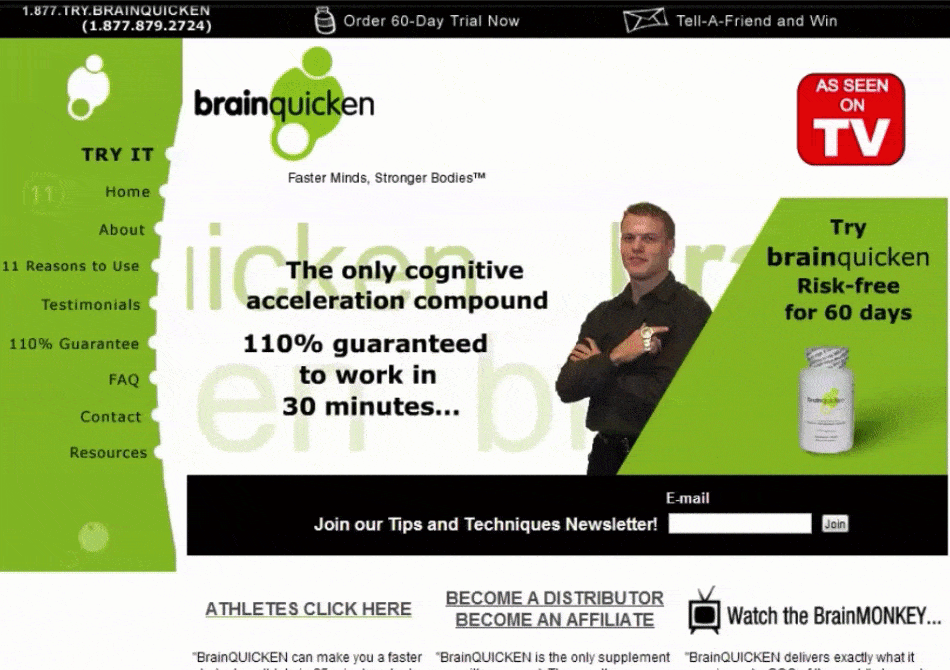

When I read these chapters ten years ago, I was shocked by how much detail Tim provided on how he started his own businesses. Most business books and blogs tend to give you an abstract on how to find and test your business idea (although today I see founders and creators being more transparent about their journeys). While some of the tools may be outdated for today’s hopeful entrepreneurs (building a website with Dreamweaver, selling CDs and DVDs. etc.), the overarching philosophies are sound.
The main issues that entrepreneurs with big ideas face today are validating their products with their customers and fundraising. Unsurprisingly, these were the same issues Professor Laura Roden focused on in the early 2000s when she ran the Silicon Valley Association of Startup Entrepreneurs (SVASE). These issues haven’t changed much in 20 years and neither have the philosophies in Tim’s book.
If there is a prevalent common fault among entrepreneurs, it’s loving their product above all else. So they have no idea how to talk to investors and no idea how to talk to consumers. — Laura Roden
Guitar picks for Taylor Swift
Tim recommends three different approaches to finding your muse, one of which I seriously thought only large companies had the resources to pull off: licensing a product. Turns out there is a lot more creativity involved with licensing a product whether you are the licensor or licensee.
In certain ways, licensing a product allows you to further outsource and automate the hard parts of launching a product because the product is designed and built by a third party. For those who want to apply the 80/20 principle to creating their first product, this might be an interesting avenue to explore. is the co-founder of inventRight, a company focused on licensing and training the next generation of licensors. Stephen has licensed tons of ideas himself and even had a chance to work with Taylor Swift creating a special line of Taylor Swift guitar picks (watch Stephen’s full interview for the full story).
Licensing is a thinking man’s game. It’s a creative game, not a start a business game. How many businesses can you really start in your lifetime? — Stephen Key
This almost seems antithetical to the original argument that entrepreneurs have a ton of ideas but don’t execute or follow through. But if you are truly an ideas person and thrive on that creativity like Stephen does, licensing feels like the perfect place to make your move. The meta point here is that masters of licensing like Stephen have applied the 80/20 principle to the licensing process.
During our conversation, Stephen discusses sell sheets, call scripts, and faxing big companies his ideas back in the day. Now, it’s just a matter of sending a LinkedIn message to the right contact. Stephen’s company has established relationships with large companies, retailers, and distributors. To borrow from A.J. Jacob’s outsourcing experiment, all the hard work of negotiating contracts and manufacturing are for someone else to worry about. Stephen and inventRight’s students can focus exclusively on the 20% of activities that lead to 80% of the results: generating creative ideas.
Before BrainQUICKEN there was Creatine
As Tim developed his own of supplements in the early 2000s, there was already a burgeoning supplements industry led by a few key players. One of them was (and still is) “Mr. Creatine” himselfー. Ed commercialized Creatine in the 1990s and went on to found Medical Research Institute (MRI). He commercialized another successful product at MRI called NO2.
Ed’s stories on validating NO2 through advertising a book in men’s health magazines and pricing the product are well documented in The 4-Hour Workweek. The story that I’m interested in is how he developed these products and competed against other similar supplements. The answer? Ed’s relentless focus on the science, research, and product development before getting into the commercialization phase:
I’d rather spend a decade working and researching the peer-reviewed journals, the science, do a tremendous amount of product development, and have an unbelievable amount of failures. — Ed Byrd
Impact and automation working together
A lot of blogs and news articles discuss the marketing and distribution tactics to get your product out into the market. While sales and marketing are important (more discussion about this in the next section), I think the behind-the-scenes stuff is what hopeful entrepreneurs need to be passionate about. Operations, infrastructure, the back-end tasks that once you automate will free you up to do all the growth hacking tactics a lot of marketers espouse.
Similar to Stephen Key at inventRight, Ed also leveraged big companies for their infrastructure and distribution channels. This allowed him to focus on product innovation, and it all started with getting the systems in place before he could sell one bottle of pills.
Tim’s passion for automation and recommending 80/20ing these system is what allowed him to detach himself from BrainQUICKEN and travel the world. How can you get outsized returns from providing minimal effort? This is the key question for the New Rich class—people who are able to create time and mobility and don’t have to defer the luxury lifestyle they’ve always dreamed of.
One person in the New Rich class who is able to create impact for others is . Steve is the founder of , a luxury concierge company. Recently, Steve realized he could impact more lives by working with entrepreneurs than he could growing his concierge company:
When you’re working with entrepreneurs, you’re not just impacting them. You’re impacting their family, their workforce, their lives. — Steve Sims
What a thrilling feeling it must be to be focusing on the few decisions that drive a majority of results at your company. This feeling is is no stranger to , who met Tim at the .
Like Tim and A.J. Jacobs, Mitchell has been able to outsource a majority of his business’ day-to-day operations to virtual assistants. It took Mitchell a few years to fine-tune the decisions he delegated to the VAs. Once he did, this left him with more time to focus on his other passions, like building his .
The primary thing I do in my company is come up with new products we’re going to work on. I’m the primary rainmaker. The actual execution componentーabout 95%ーis done through people (VAs) we’ve hired. — Mitchell Levy
Similar to pushing me over the edge to go on an extended trip overseas, the Automation chapters pushed me over the edge to create my own physical products. It was an amazing experience stumbling through the distribution and marketing process for my products. While creating physical products won’t go away, I think more people are building digital products these days due to the prevalence of online tools and cost savings from not managing physical inventory.
Whatever the idea is, the important thing The 4-Hour Workweek teaches you is to execute and test and validate your ideas. I think people are caught up in the amount of passive income they might generate or the investment it might take. Many of the stories Elaine Pofeldt highlighted in her book are not multi-million VC-backed companies, but rather simple ideas that the entrepreneur was able to execute on. had this to say about finding your muse:
It can be an eBook, it can be an eCourse, it can be a software download, it can be a membership site—it seriously doesn’t matter. The most important thing is that you’re making the move; you’re taking the step to be able to become more of a passive-income-generating entrepreneur. — Chris Ducker
Whether you resell, license, or create your own products, Chris would say the most important thing is to “make the move” and being testing your idea.
IV. Growing a one-person $1M business
Opinions on scaling your business and making the tradeoff between money and time.
After you get over the hump of finding an idea, testing and validating it, and start generating passive income, the next step is growing that business. Quitting your full-time job to pursue your “muse” is a personal decision. As the previous section shows, those who pursue their projects full-time reap the results and rewards. I would highly recommend checking out some of the to read real stories of these entrepreneurs.
is a former senior editor at Fortune magazine and published a book based on the entrepreneurs who have started these $1M businesses after reading The 4-Hour Workweek. As Elaine was doing research for her
, she came across some unique trends in the Census Bureau’s data. The revenue for non-employer businesses was consistently breaking seven figures. She wrote a story for Fortune about her findings and that story went viral. She provides some insights into how you should think about running a one-person business:
I want to help people run a better one-person business. It doesn’t have to be a 7-figure business. What if your one-person business makes $100,000 and you live in Tennessee? — Elaine Pofeldt
Elaine highlights one of the core concepts from Tim’s book regarding absolute and relative income. Tim demonstrates this concept in the book with two people:
On average, Person A earns $25/hour while Person B earns $100/hour, assuming 50 weeks in a year. Tim argues that people he spoke to in the book would rather be Person B because the relative income is higher. If you factor in location, as Elaine points out, you have even more to consider as you figure out what type of lifestyle you really want to live.
Having the opportunity to trade money for time is obviously a great position to be in. All the entrepreneurs I spoke with have the freedom to make this trade. If they want to truly build a $1M+ business, they have the freedom to invest their time for the monetary gain they hope to achieve.
Give it all away for free
From speaking with the contributors to the book about the companies they’ve built, I found one truth: there is no standard playbook. Despite the step-by-step instructions provided in The 4-Hour Workweek, when you dig deeper into the decisions and marketing ideas, you discover a unique story for how the entrepreneur got from 0 to 1.
Everyone hates being sold something. Through effective content marketing and “solution selling,” as the pros call it these days, you see more marketing strategies pulling their customers in rather than pushing their message out. The way Stephen Key describes the growth of inventRight is a perfect example of this:
At inventRight, we don’t sell. We don’t solicit, we don’t run ads, we don’t do any of that. We give content away for free. And we give it all away. — Stephen Key
Mr. Creatine further confirmed that the best type of marketing is the type that cannot be bought. You can do all the keyword research, Facebook lookalike targeting, and pre-roll ads you want. The fancy metrics will give you the sense that you’ve found the formula that works, but the most effective marketing will always be word-of-mouth.
You cannot buy this type of advertising. This comes back to product innovation and product efficacy. You need to have all of those before you can have a grassroots campaign. — Ed Byrd
Ed’s advice seems to go against the advice Tim gives in the Income Autopilot chapters in the book. The tactics in those chapters cover testing your ideas with smart advertising via Google Adwords and other online tools. Ed did in fact do that testing when he advertised the book about NO2 in men’s health magazines to gauge demand. The word-of-mouth effect came after the many months of product testing to create a truly innovate pill.
To drive home the point about not selling, Steve Sims hints at the need to identify the problem your product or service solves. I think the key takeaway here is that entrepreneurs can get caught up with the look of their mobile app or the design of their website. If the product solves the problem for the customer, the customer will be more forgiving if the color of your “buy now” button isn’t the right shade of green.
What do you solve? If I need to sell you something, it comes down to my skillset. — Steve Sims
Turning off income autopilot
I really appreciate the circuitous journeys entrepreneurs embark on to get to the “income autopilot” stage. I think Tim’s tips on testing and validating your ideas will get you halfway there, but sometimes you’ll just have to toss up some Hail Marys to get that step change in growth.
Elaine Pofeldt interviewed hundreds of entrepreneurs for her book. She tried to find a common thread between how everyone started their businesses but ultimately realized no such thread exists:
One reason I don’t believe in systems for starting a business is because it’s so different for every type of business. [...] There might be some basic things they have in common, but you’re kind of force-fitting everyone into something that doesn’t exist. — Elaine Pofeldt
As your company grows, implementing the systems allows you to be a remote CEO, as Tim calls it. It also allows you to lead a company with “controlled chaos.” has worked in big companies like Microsoft and also launched various startups. Tim sought John out after reading to get some advice about building up his supplements business.


John Lusk, VP at Spire
John continues to practice concepts from The 4-Hour Workweek like time management and living a life of experimentation. What I was most interested in learning from him was his ideas on applying processes to a high-growth startup. Paradoxically, he said process is needed to unlock creativity.
The more chaos there is, the more reason you need a framework to put people in the right places. You still need that unbounded thinking, but you can’t do this when you’re putting out fires left and right. — John Lusk
One CEO who is no stranger to working with hit products is , founder of Manhattan Media. Having bought traditional media for popular supplement products in the past, she got on Tim’s radar for building awareness for a product through print ads. Her advice for swinging for the fences when stating your business? Publish a New York Times Best Seller book 😉.
V. Fear, the mind-killer
Using Tim’s fear-setting exercise as context, how can we act upon our fears?
One of the most popular exercises from the book is fear-setting. Tim’s about the same topic makes an argument against the typical goal-setting people do when they need to make a big decision.
Some of the “comfort challenges” in the book revolve around facing your fears of rejection and embarrassment (stare into the eyes of strangers for a few minutes). Patrick Buggy, a leadership coach, made an interesting about Tim’s fear-setting exercise:
Fortunately, when you stay aware of the fact that fear distorts your thinking, it gives you the opportunity to act with intention. — Patrick Buggy
Act with intention. I like that. Perhaps ruminating about your fears rather than your hopes and goals gives you more clarity on what you should do to conquer your fears.
Professor Laura Roden often speaks to her students about overcoming their fears for achieving a life of mobility, and this quote embodies the trade many people are unwilling to make:
If you want to get something you’ve never had, you have to do things you’ve never done. — Laura Roden
For avid travelers like Jean-Marc Hachey, facing multiple fears was a common practice. Jean-Marc experienced corruption in Nigeria and sailing in the Caribbean in a small boat where if he fell off no one would know he died. He admitted that no matter where you go, you will always be uncomfortable with something. His strategy for combating the fear of the unknown:
When you come to a new place, you don’t want to be paralyzed with fear. I try to locate, identify, and ignore the worst fear right away. Then the other things that may bother you become less impactful. — Jean-Marc Hachey
Venture capitalist Tim Draper advised Tim on the book before it was published, and he is a big believer in changing the status quo. He is an outspoken proponent of Bitcoin and wants to see a world where governments are decentralized.
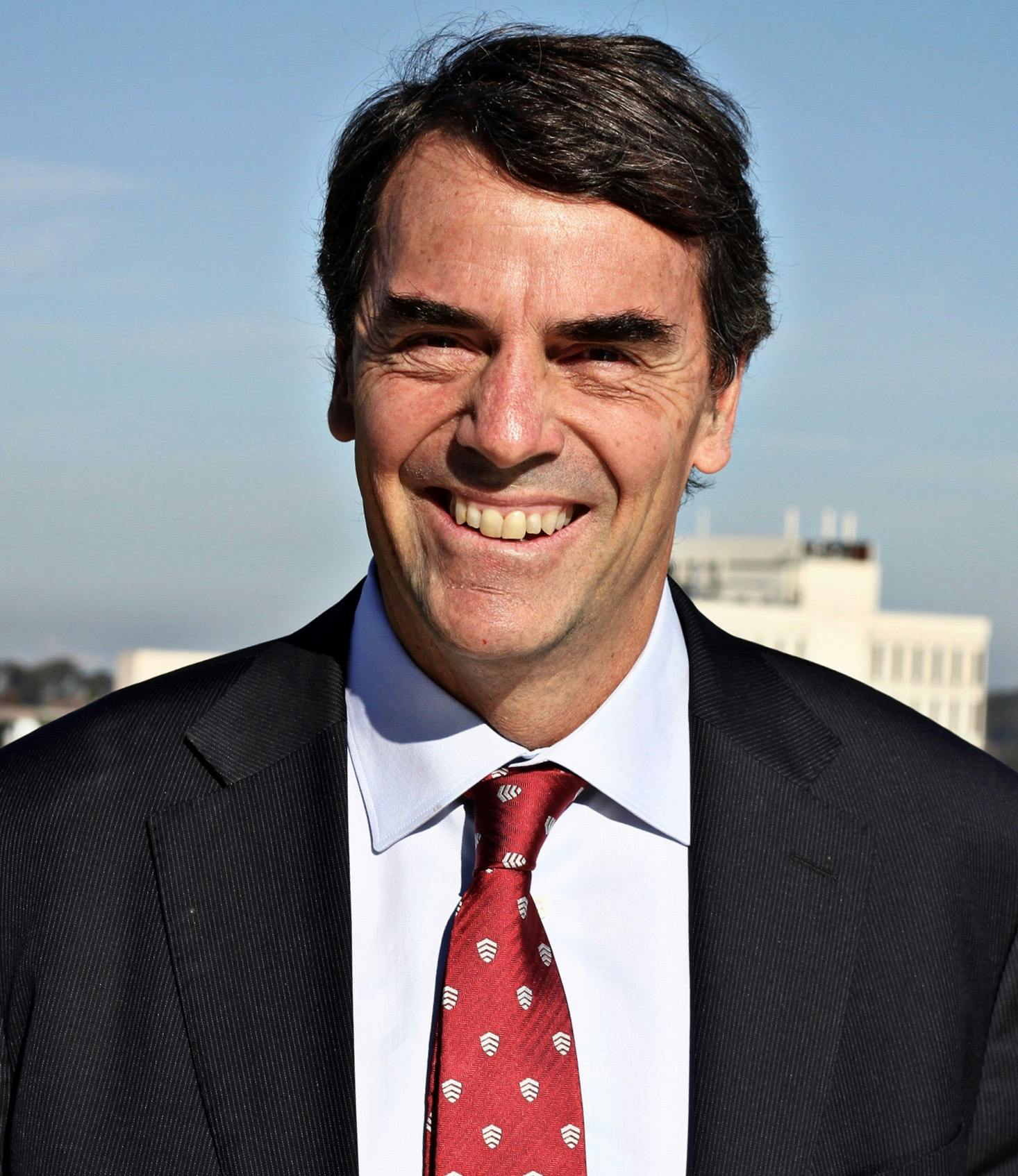

Tim Draper
I asked him similar questions about making big decisions and overcoming self-doubt. From his perspective, it all comes down to being mindful of your thoughts:
Sometimes people want to feel “safe” and don’t want to rock the boat. If you feel stuck, you should reevaluate your thinking. As Frank Herbert said in Dune, “Fear is the mind-killer.” Fear is also the business killer and the economy killer-just look at COVID. — Tim Draper
VI. Life of experimentation and examination
Finding ways to challenge and change your beliefs.
If you have been following Tim’s books and podcasts over the years, you might have seen a shift in the topics he writes and talks about. Recently, I’ve found his blog posts and the resources he recommends focus on examining your life versus life-threatening health experiments (see The 4-Hour Body). While the two activities are closely related, I’ve found self-reflecting exercises to be more powerful than the diet or body hacks.
Practicing poverty
For instance, Tim is a big proponent of stoicism and frequently quotes the Stoic writings of Seneca (see the ). Some of the “comfort challenges” in The 4-Hour Workweek hint at stoic practices. From trying out these challenges, the key takeaway is that these exercises are all challenges for the mind as Tim Draper would say. Check out Tim’s talk about his stoic philosophies:
The video comments are...interesting.
Tim includes Donald Robertson’s in his recommended reading list on stoic philosophy. Robertson wrote in response to an article about Silicon Valley entrepreneurs being obsessed with the “suffering” aspects of stoicism. A key difference he points out between stoicism and Stoicism is that the former is a “modern concept of a psychological personality trait.” This definition, for better or worse, is the one I think a majority of people subscribe to and leads to different interpretations when put into practice. I think if people are doing more introspection to better themselves, it achieves the same goals as the ancient Stoics.
The Stoics don’t follow regimes in terms of eating, sleeping, or exercising primarily to improve their physical health. They’re supposed to be doing it mainly to improve their character by developing self-control and endurance.
—Donald Robertson
So what can we take away from Tim’s experiments?
Tim describes himself as the “human guinea pig” and the results of his experiments are neatly packaged into his books for us to unwrap while enjoying modern comforts. Instead of blindly following the results, I would look deeper into the topics from all his books and compare them with other research available. Only after you’ve examined all the evidence, can you start incorporating the practices into your life. Tim himself said he doesn’t want to be a for all his fans and readers 🤔.
A.J. Jacobs is also an experimenter and ties his experiments into his writing projects. I really like this quote about having a North Star for all his experiments:
[My experiments] may be difficult, awkward, or absurd, but they have to, in the end, have some potential to change my life for the better.
— A.J. Jacobs
And sometimes the experimentation, coupled with changing norms and technology, can lead to an entirely new life. Recall Professor Laura Roden’s story about taking care of pets and traveling around the world in section II. She experimented with a virtual pet service and realized she can travel and fulfill her love of animals. It all started with listening to one woman she met at a conference talk about her son’s startup connecting pets with owners.
This new wonderful development in the economy that I’ve been able to take advantage of lets me experience lives in other places as if I grew up in another place. And I intend to keep doing that for the rest of my life. — Laura Roden
VII. Your 20-year-old self
My all-time favorite question Tim asks during his interviews is “What advice would you give to your 20-year-old self?” This question almost forces you to think about an answer to that awkward job interview question: “What is your biggest weakness?” If answered correctly, it elicits a very honest response and gives you insight into someone’s character and values. I couldn’t resist not asking this question:
A.J. Jacobs
Albert Pope
alb
Ed “Mr. Creatine” Byrd
John Lusk
Take more risks when you’re young. Don’t worry so much about success and failure. The more connections you can make on a global perspective, the better you’ll be.
Professor Laura Roden
Mitchell Levy
Robin Malinosky-Rummell
Stephen Key
Steve Sims
Tim Draper
Live! Say “yes.” Try to think for yourself. Know that freedom and trust are two of the greatest things people can have for each other. Build trust with the people around you. Do what you say you will do. And always encourage free expression from everyone around you even if it differs from your or common opinion.
Epilogue
To wrap things up, what did I learn ten years later from the book? To 80/20 this epilogue, here are three bullet points with a detailed reflection afterwards:
Be ruthless with time management
If you’re part of the knowledge working class, you’re on email, Slack, Zoom, and other digital tools all day. It’s even easier today for others to interrupt you when you want to get deep work done. A virtual conference or a request for feedback in a Slack thread is just a click away. This means you need to be even more diligent with eliminating distractions and delegating when possible.
Over the last ten years I’ve found new digital platforms that add to the list of distractions and take away from things that I care about. While the techniques in the book are great for eliminating distractions, the takeaway for me is re-evaluating what’s taking up my time on a weekly basis. After that re-evaluation, I then re-apply the principles from the book. This is a 100% mental exercise because logging this in a tool just means more mental overhead.
Be bold with your curiosities
The tactics for working remotely, travel hacks, and launching a 1-person business all help with “lifestyle design.” For me, the underlying message is simply being bold with your curiosities. This principle is a precursor to Tim’s 2nd book, The 4-Hour Body.
What I mean by being bold is tugging on the strings of your curiosity when you learn something new, watch an interesting documentary, or hear something novel during a conversation. Instead of leaving the thought at “oh that’s interesting,” pursue that interest a little more. See if it has the ability to change your life, your network, or even income.
As a matter of fact, this article started with a mental observation I had over the summer as I re-read the book: “what are these people doing now?” I never thought I would get in touch with the contributors, much less interview them for this article. I just tugged on that string one inch at a time.
Fill the void with void
If you listened to of Tim’s podcast, you may recall the part of the book Tim might update today is the Filling the Void section. The takeaway from these chapters is do the research and prepare for your life after you’ve automated your work and income. This new life may involve volunteering, participating in social impact causes, and learning new skills.
This is where I disagree a bit with Tim’s advice. Over the years I’ve found that filling the void is an oxymoron. I enjoy the void. I enjoy not having to think about the next volunteer project. Otherwise that project will recruit the planning and optimizing muscles I gained from automating the tedium in my life in the first place. Sitting in silence at the park, playing a game of Banagrams, and biking around your city may feel like mindless activities for some. For me, these are precisely the type of activities that fill and fulfill my void before I have to get back on the hamster wheel again.
Bonus: Other stories from the interviews
There are some amazing stories people shared during the interviews that are not necessarily related to The 4-Hour Workweek. Here are just a few of those stories which link out to a timestamp in the full video interviews (see for more):
@Albert Pope
@Ed “Mr. Creatine” Byrd
@Elaine Pofeldt
@Laura Roden
@Marianna Morello
@Mitchell Levy
@Robin Malinosky-Rummell
@Rolf Potts
@Steve Sims
Comments?
Leave any feedback by replying to this Tweet:
Want to print your doc?
This is not the way.
This is not the way.

Try clicking the ⋯ next to your doc name or using a keyboard shortcut (
CtrlP
) instead.